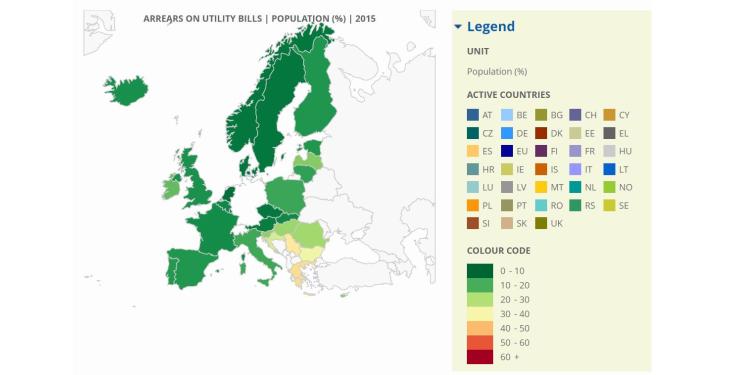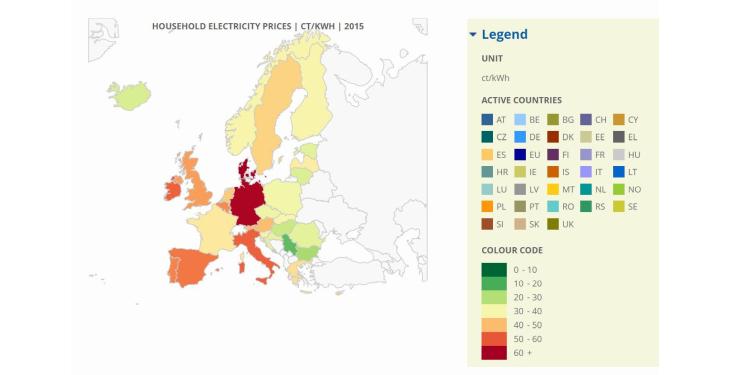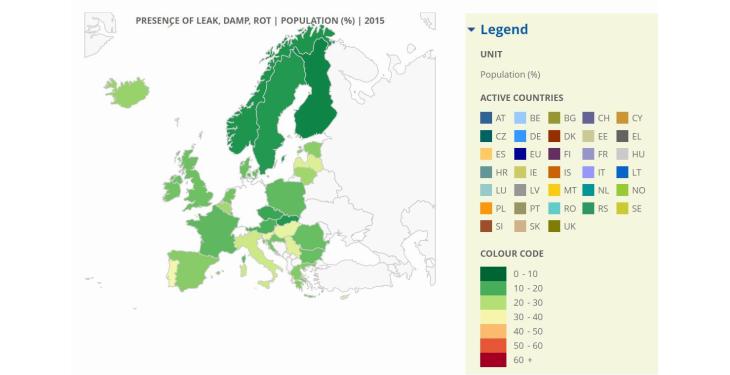The European Commission has officially launched on January 29 a portal dedicated to energy poverty, an online aggregator of statistical information designed to capture the multi-faceted reality of this concept. More than 50 million households in the European Union are struggling to attain adequate warmth, pay their utility bills on time and live in homes free of damp and mould. For increased awareness of energy poverty, the Energy Poverty Observatory has been created, a political effort by the Union to combat this phenomenon in member countries.
“Energy poverty is a multi-dimensional concept that is not easily captured by a single indicator. Our approach to measuring energy poverty has been to use a suite of indicators, which should be viewed and used in combination”, is written on the “Indicators & Data” page, which allows the visualization of 27 indicators from 33 states, over a 12 years period (2004-2015).
Poverty is shown in the arrears on utility bills

From West to East and from North to South, the share of those unable to pay their utility bills on time due to financial difficulties increases. The poorest countries in Europe are those from the former Yugoslavia, with 24%, respectively up to 33% of the population having arrears in Croatia and Serbia, in 2015. The situation was comparable in Bulgaria (28.1%), and even worse in Greece, the same year – with a 35.5% share. Romania (18.2%) and Hungary (17.6%) placed only a little worse than Latvia (15.3%) and Slovenia (16.2%), but nowhere near to Slovakia (4.3%) or the Czech Republic (2.4%).
The price of electricity is a political decision

Surprisingly, the lowest electricity prices for household consumers was recorded in Serbia, in 2015 (12.2 cents per kWh). In Bulgaria, the price was 19 eurocents per kWh, only a little cheaper than in Hungary (22.7 ct/kWh). Around 50% higher prices were paid in Norway (30.5 ct/kWh) and especially in Sweden (37.3 ct/kWh). Even higher prices were recorded in the United Kingdom (43 ct/kWh), Spain (46.8 ct/kWh) and Italy (48.8 ct/kWh), while the highest were in Germany (59 ct/kWh). Be it aggressive energy transition policies or subsidies for living conditions, it is obvious that national electricity markets are far from being connected in Europe and just as far from reflecting local dynamics of demand and supply.
The quality of dwellings breaks with the geographical statistical rule

Even more heterogeneous is the map showing the share of the population that admits having problems with the quality of the dwelling, based on question “Do you have any of the following problems with your dwelling / accommodation?
- a leaking roof
- damp walls/floors/foundation
- rot in window frames or floor
If France is a little better than Romania, with 11.9% of the population admitting that they are facing such problems, compared to 12.7%, the United Kingdom (13.2%), Spain (15.5%), but especially Italy (23%) and Portugal (28.9%) are much worse! Even rich states in the North have significant shares of the population living in dwellings affected by damp and rot, such as Denmark (12.9%), the Netherlands (13.6%) and Belgium (18.3%).
